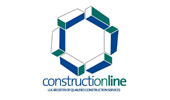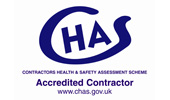How should you protect your screed?
How Should You Protect Your Screed?
I’m Andy Parkin, Managing Director of the Multi-Award Winning Speed Screed. I’m here to talk about how should you protect your screed.
Screed is a necessary material for construction and plays a major part in the process. Its use as preparation for flooring makes it essential since it levels the floor and provides the perfect surface for any floor covering that might be applied above it.
Each type of screed has its own particular setting and drying time. Once you have applied the screed, you need to make sure that no one steps on it before it has set. The care needs to be about more than just stepping on it. Screed is generally not a wearing surface and needs to be protected from the point of laying to the point of covering. Hence, you need to take specific screed protection considerations.
What are the screed protection considerations?
The first consideration that needs to be taken when protecting screed is the number of people who might have to walk on the screed. Light traffic is very different to full site traffic.
The surface of the screed should be protected with specialist cardboard/plastic screed protection products. Supplied on rolls they are quick and easy to lay on top of the screed. This form of protection with prevent damage from general site traffic and keep the screed “fresh” up to the point of laying the floor coverings.
Edges and joints in screed are going to be the most vulnerable element, and if exposed need to be protected. This can in the form of boxing of edges, with wood or even metal form work. If not protected those areas may be subject to damage.
Loading of the screed is a vital consideration, at what point does the screed need to take loading?
Loading can be in the form of internal walling, access equipment, fittings, and anything that the screed will need to resist.
Each screed will have a design strength, and this strength will take a number of days to reach. The project engineer will be able to calculate the screed requirements, and/or the screed protection requirements to resist the loads.
Generally, plywood is used to spread the load, with different thicknesses used depending on the load.
A nonstructural screed is not concrete and needs screed protection. Surface traffic, loading, impact damage, will damage and breakdown the screed’s matrix without screed protection.
There are often repair solutions for this damage, however in some cases the solution may be to remove.
Prevention is always better than cure!
I hope this helps with your “screed protection” questions. Do get in touch for more information.
Our Accreditations
About Speed Screed
Speed Screed Limited was founded on the key principle of providing first-class customer service. It has since built itself an impressive reputation for delivering high-quality projects across the United Kingdom.
The company’s success is built on its belief in quality work, attention to detail, on-time completion, strong working partnerships and the recruitment of top-level staff. about us >








